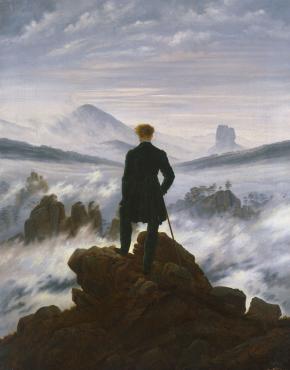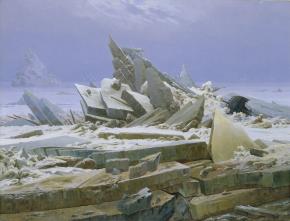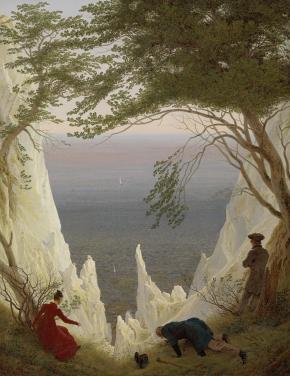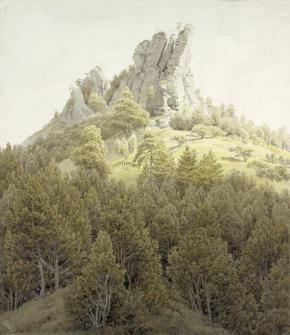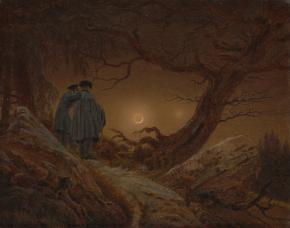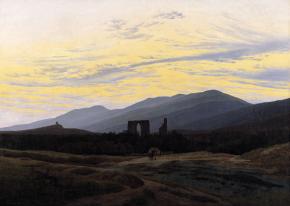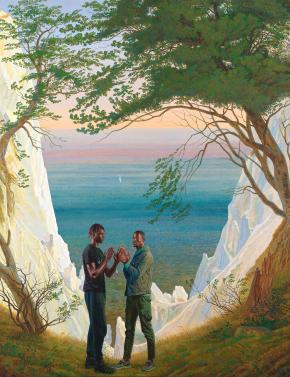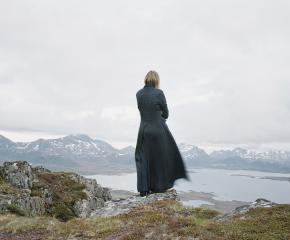The Art Institute of Chicago ihas announced Among Friends and Rivals: Caravaggio in Rome, on view from September 8, 2023 through December 31, 2023. This intimate exhibition will include two rarely loaned Caravaggio paintings alongside works from the Art Institute’s collection by some of his closest friends and rivals from the 17th century Roman art scene.
With only seven Caravaggio paintings in collections in the United States, this is a rare opportunity to view the innovation and influence of Caravaggio’s work in person. Two of the paintings within this exhibition—The Cardsharps, on loan from the Kimbell Art Museum, and Martha and Mary Magdalene, on loan from the Detroit Institute of Arts—showcase Caravaggio’s ability to capture drama through gesture, light, and composition.
Born in Milan in 1571, Michelangelo Merisi da Caravaggio entered the art scene in Rome around 1592 and over a short career developed an original and captivating style that attracted eminent patrons and passionate followers including Giovanni Baglione, Bartolomeo Manfredi, and Francesca Buoneri.
“Caravaggio’s work invites slow looking to take in the deliberate details of the narratives within familiar scenes of drinking and gambling, or of saints and holy figures,” said Rebecca Long, Patrick G. and Shirley W. Ryan Curator, Painting and Sculpture of Europe. “He was a true storyteller whose paintings are most striking in person.”
Caravaggio’s legacy and influence are seen in the work of many other artists working in Rome. Three paintings from the Art Institute’s collection round out this focused exhibition including one by Caravaggio’s great rival, Baglione, and two of his closest associates and followers, Manfredi and Buoneri.
Among Friends and Rivals: Caravaggio in Rome is curated by Rebecca Long, Patrick G. and Shirley W. Ryan Curator, Painting and Sculpture of Europe.
The Toledo Museum of Art (TMA) will bring to light Caravaggio’s far-reaching impact with “The Brilliance of Caravaggio: Four Paintings in Focus,” on view Jan. 20-April 14, 2024. The landmark exhibition pairs four theatrical paintings by the renowned Italian artist with four works by Italian, French, Dutch and Spanish artists in TMA’s collection who found inspiration in his technique and subject matter. The exhibition assembles four Caravaggio paintings in the United States for the first time in more than a decade and marks just the second showing ever of the artist’s work at the Toledo Museum of Art.
“The Toledo Museum of Art endeavors to present the full scope of art history through its exhibitions,” said Adam Levine, the Toledo Museum of Art’s Edward Drummond and Florence Scott Libbey director. “‘The Brilliance of Caravaggio: Four Paintings in Focus’ brings European masterworks to the forefront, illuminates Caravaggio’s impact on a succeeding generation of artists and introduces our audience to a dramatic aesthetic that has relevance today.”
Caravaggio’s genre scenes and paintings of Christian saints embody the timelessness of human experience. Themes of threat, seduction, love, deceit and religion are prevalent in his work and align with modern-day experiences.
Michelangelo Merisi da Caravaggio. The Cardsharps, about 1595. Kimbell Art Museum, Fort Worth, Texas.
“The Cardsharps” inspired other artists to create works with related themes.
Valentin de Boulogne’s “Fortune-Teller with Soldiers” (ca. 1620) depicts a loss of human innocence that starts with a child who steals something from a man’s cloak. That man, also a thief, steals from a Roma woman. The only presumably innocent man in the painting has his fortune told — and his ring stolen — by a fortune teller.
Secular ideas continue in
Caravaggio’s “The Musicians” (1597), one of his most intriguing paintings. Youths dressed in classical attire play instruments and practice a love song. One of the figures likely is a self-portrait of Caravaggio. Music was a popular subject of that time, and in conjunction with the presence of Cupid, the rendering is to be understood as an allegory of Music and Love
.
That theme continues in Jusepe de Ribera’s “Portrait of a Musician” (1638). Ribera, who was born in Spain but spent most of his life in Italy, patterned much of his work after Caravaggio’s style, mirroring his realism and dramatic contrasts between light and shadows.
Caravaggio also included Christian saints in his work. His first religious painting,
“Saint Francis of Assisi in Ecstasy” (ca. 1595-96), presents the 13th-century saint’s vision of his miraculously receiving the stigmata, the wounds left in Christ’s body by the Crucifixion. Although the scene was popular among painters of that time, Caravaggio’s work marked a departure from the norm with a more intimate scene.
Heavily influenced by Caravaggio, Dutch painter Hendrick ter Brugghen spent 10 years in Italy and returned to his native Utrecht, the Netherlands with a style characterized by dramatic contrasts of light and shade. That influence is apparent in “
The Supper at Emmaus” (1616), the earliest known painting after the Dutch artist’s return home.
Caravaggio manipulates light to characterize the morality of two sisters in “Martha and Mary Magdalene.” The painting depicts a modestly dressed Martha sharing Jesus Christ’s miracles with her sister Mary. Mary’s divine glow signals her conversion from a life of sin to one that aligns with Christ’s teachings.
Artemisia Gentileschi’s “Lot and his Daughters” (ca. 1636-1638) combines themes of faith and deceit with a scene from the Book of Genesis when Lot’s wife disobeys God’s command not to look back at the burning city of Sodom and is turned to a pillar of salt. Lot’s two daughters use drunkenness and incest to continue the human race after concluding that they are the last three people on Earth. Gentileschi worked throughout Italy in Rome, Florence and Venice and painted this work in TMA’s collection in Naples.
“The Brilliance of Caravaggio” is curated by Lawrence W. Nichols, the Toledo Museum of Art’s curator emeritus and former William Hutton senior curator of European and American paintings and sculpture before 1900. He served the Museum for nearly three decades before retiring in June 2021. During his time at TMA, Nichols oversaw the acquisition of approximately 50 works of art and organized more than 25 special exhibitions. Among them were several international exhibitions of Dutch and Flemish art, including “Frans Hals Portraits: A Family Reunion” (2018), which traveled to Brussels and Paris; “Rembrandt: What Was He Thinking?” (2006); and “Hendrick Goltzius: Prints, Drawings and Paintings” (2003), which also appeared in Amsterdam and New York. His organization of “The Brilliance of Caravaggio: Four Paintings in Focus” was five years in the making.
“It is both an honor and a joy to present visitors, new and frequent, with these gems from the brush of one of the greatest painters who ever lived,” said Nichols. “The extremely rare opportunity to dwell with the spellbinding art of Caravaggio will simultaneously afford the Toledo Museum of Art the occasion to showcase the Museum’s extensive holdings of paintings by so-called Caravaggisti, artists who sought to emulate his compelling realism.”
“The Brilliance of Caravaggio: Four Paintings in Focus” is organized by the Toledo Museum of Art. The Caravaggio paintings on view are on loan from the Kimbell Art Museum (Fort Worth, Texas), the Wadsworth Atheneum Museum of Art (Hartford, Connecticut), The Metropolitan Museum of Art (New York) and the Detroit Institute of Art (Detroit). Admission to “The Brilliance of Caravaggio” at the Toledo Museum of Art is $10.



.jpg/1280px-Saint_Francis_of_Assisi_in_Ecstasy-Caravaggio_(c.1595).jpg)


